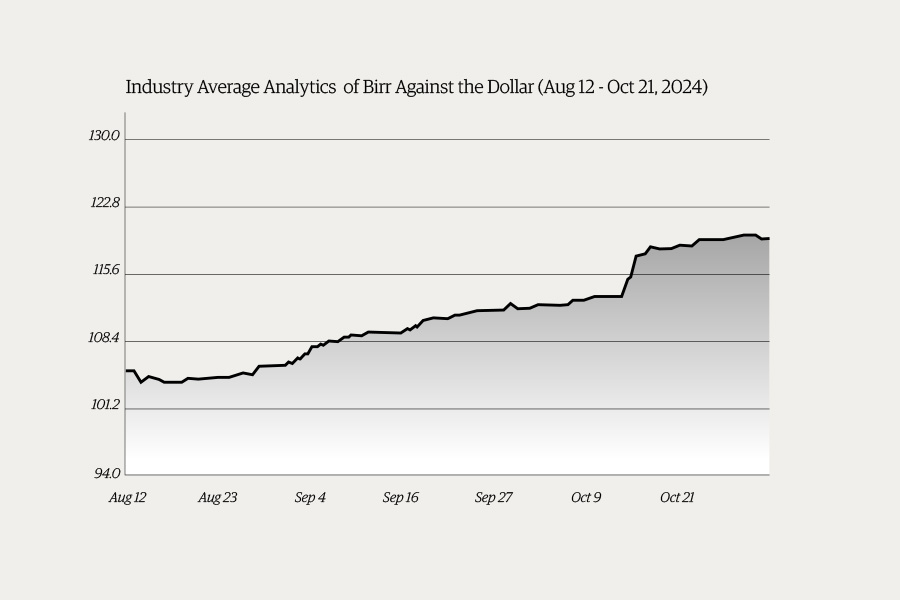
Fortune News | Nov 25,2023
CR2 in partnership with IBS Intelligence
This opinion piece looks at:
1. The importance of seamless customer journeys
2. Creating an accurate and an insightful customer map
3. Future-proofing customer journeys
4. Outlook and way forward
Continuously evolving landscape, cutting-edge competition, and rising customer expectations have become a rule of thumb to adapt to in almost every industry, including banking and financial services.
In an on-demand economy where social and mobile innovations have significantly expanded the range of crucial touchpoints, winners and losers will be determined by their ability to diversify and personalise engagement methods across the entire banking customer journey.
At the same time, the rising popularity of digital-only banks –a.k.a. challenger or neo banks – has made incumbent banks and traditional lenders sit up and take notice. This new generation of banks is finding success by revolutionising the banking customer experience. Neo and challenger banks have mastered the art of delivering an integrated, frictionless customer journey. Their DNA is more compatible with today’s fast-paced consumer mindset since they operate as financial technology platform companies.
With innovation and a nimble architecture in their arsenal, these digital-only banks can launch products and services in record time, provide seamless UI/UX via world-class banking applications, and offer customers services at little to no fees, thus setting the bar quite high for traditional banks when it comes to customer experience.
transformed to deliver a consistent banking experience, whether online or in retail. In a study by The Financial Brand, 51% of banks listed “Improving Customer Experience” as their top priority for 2021, second only to “Digital Banking Transformation” – both of which go hand in hand (see Figure 1).
The world’s most successful banks have realised that the quality of the banking experience is everything.
When these institutions offer customers a pleasant journey throughout their services, they will affiliate more with their products, strengthening loyalty and sharing positive feedback. Ultimately, all this leads to an uptick in revenue.
The first step for banks that aim to embrace a customer-cent r i c mindset is mapping customer journeys.
Mapping custome r journeys, whether to set up a new account, apply for a loan, make mortgage repayments,
or recover a forgotten password, can help financial institutions step into customers’ shoes, identify potential
problems, and work on novel solutions. These maps should outline the process end to end, from awareness to consideration to purchase to experience, and finally, to loyalty, for any given scenario from the customer’s perspective.
Banks need to monitor, measure and manage every touchpoint and engagement to positively impact growth, brand perception, loyalty, and trust. For instance, when mapping out the journey for a new customer to set up an account, it should begin with the moment they walk in/visit your website/speak to an agent and end with the moment when their account is fully set up and ready to use.
By creating an accurate and insightful customer persona, banks can understand their goals, touchpoints, and pain points. This will allow organisations to target and fix any roadblocks along the journey. Banks should consider collaboration with specialist designers to achieve hyper-personalisation and reduced customer journey duration as vital components of their customer experience strategy for the future (see Figure 2).
Collaborate with UX/CX designers
Banks often focus on the functionality and technology of the products they choose to offer to customers. Sometimes, this concentration overshadows the user journey when utilising the said product. Banks can collaborate with specialised CX and UX designers to best capture the journey and possible pain points. Their perspective and specially curated customer journey will create the perfect synergy between bank offerings and endusers, reducing the chances of dissatisfaction.
Customer journey mapping and experience design are critical components of a successful customer journey strategy.
Customise with hyper-personalisation
Banks can make a more significant impact when interactions feel logically connected. Instead of random, disjointed offers and opportunities, successful banks that take charge of the customer journey are designing connected customer experiences. Alerts, reminders, suggestions, nudges, and product cohesion add to a holistic, smooth customer experience. AI and ML technologies can enhance data analytics to create a bionic banking experience
for customers.
Condense with fewer steps
Touchpoints along a journey may be easily identified, as well as any pain points along the way.
Still, one consideration banks tend to miss out on is the number of steps taken from start to finish for a customer to complete a transaction or process when banking. Creating simplified journeys with fewer steps to completion will retain customers during any process. The longer the journey, the higher the chance of incompletion. CR2 has imbibed this with their fourstep journey to create and open a bank account, a quick and effortless way to begin banking.
Even after creating well-researched and well-nuanced maps, over time, these need to be updated and improved to keep up with the dynamic evolution of digital banking and customer expectations.
Regulatory requirements could also demand changes at different points in the customer journeys. Banks should, therefore, consider several measures to future-proof customer journeys.
Low code application platforms – Highly configurable
Highly configurable development platforms allow both professional developers and business users to access ‘drag and drop’ functionalities with the help of their easily accessible graphic interfaces. These platforms have democratised app development and enabled everyone in banking to participate actively and even build apps to transform customer and employee experiences. A configurable platform empowers banks with agility, faster roll-out, and streamlined standardisation. The ability to configure interfaces as and when required allows banks to customise their customer journeys along the way while remaining relevant and keeping up with ever-changing needs and preferences.
Templatised user interface – UI/UX
This is where the “right product, right person, right time” ethos comes into play, and strategy and creativity come into the crosshairs as the real differentiators. Today’s digital banking customer is looking for a seamless, omnichannel experience with easy-to-use features, up-to-date technology, attractive interfaces, and shorter journeys. Taking advantage of a templatised user interface gives banks an upper hand when addressing the customer’s needs. Lesser time, manpower, and programming are required when using an industry standard template for UI and UX. Suppose the bank finds a kink in the journey or an area of improvement on the application. In that case, a simple change on the interface itself initiates a domino effect, allowing the edit or addition to run through the whole app for all its customers.
Customer centricity - Voice of customer
As the saying goes, “Customer is King”. This ideology has withstood the test of time and is still highly relevant in the banking sector. Keeping customers engaged and satisfied leads to loyalty, a key success metric for financial institutions. Customer journeys in banking must become more customer-centric and always keep their voices and perspectives in mind. Consumers appreciate the customisation, especially when it is delivered seamlessly across
different channels. With a change in orientation from the bank’s point of view to the customer’s point of view, a positive shift in customer experience can be seen as their expectations, pain points, and experiences have been mapped out.
Digitisation and technology advancements will continue to shape customer expectations and their experiences. Changing customer behaviours means that banks must continually curate unique journeys and propositions to meet evolving requirements. Banks would have to rethink their digital transformation journeys to capture new growth
opportunities and unlock greater value.
As banks embark on this customer experience journey, they need to ensure their core technology and processes are indeed geared up for the digital transformation.
Legacy architecture is weighing down traditional banks. Age-old core banking architecture with several layers and spaghetti code are complicating and delaying digital transformations. Simply adding technology stacks on top of the core architecture will not give banks the seamless functionality they require to provide a best-in-class customer
journey and experience. Core transformations are characteristically challenging and costly. Banks may need to investigate concepts of microservice architecture or composable banking to bring their core architecture up to new-found industry standards.
Innovation and new-age technologies will be key factors impacting any bank’s transformation. Currently, many traditional banks lack innovation due to a traditional mindset and outdated processes. As a result of this technologies like artificial intelligence and machine learning are not being used to their full capacity.
With digitisation modifying and reshaping the banking landscape, traditional players need to realign and prioritise
innovation powered by new-age technology to provide world-class banking services.
There are several strategic customer experience investments banks should make. Banks need to prioritise sustainable growth by investing in customer service with quick turnaround time using AI and ML forchatbots and smart assistants, omnichannel banking with uniform UI/UX across all touchpoints and digital mediums, and personalisation throughout the customer journey utilising data analytics.
Together, these changes can empower banks to provide high quality customer experiences.
The future of banking will pivot on connected ecosystems to enable better customer journeys.
Banks will be compelled to strengthen their digital capabilities to manage interactions and transactions at every touchpoint, ensuring a seamless customer journey all the way.
PUBLISHED ON
Jun 15,2022 [ VOL
23 , NO
1155]

Fortune News | Nov 25,2023

Advertorials | Aug 27,2024

News Analysis | Dec 15,2024

Money Market Watch | Nov 03,2024

Life Matters | Apr 19,2025

Fortune News | Jun 18,2022

Radar | Oct 08,2022

Fortune News | Jun 20,2025

Fortune News | Aug 18,2024

Sunday with Eden | Jul 17,2022

Dec 22 , 2024 . By TIZITA SHEWAFERAW
Charged with transforming colossal state-owned enterprises into modern and competitiv...

Aug 18 , 2024 . By AKSAH ITALO
Although predictable Yonas Zerihun's job in the ride-hailing service is not immune to...

Jul 28 , 2024 . By TIZITA SHEWAFERAW
Unhabitual, perhaps too many, Samuel Gebreyohannes, 38, used to occasionally enjoy a couple of beers at breakfast. However, he recently swit...

Jul 13 , 2024 . By AKSAH ITALO
Investors who rely on tractors, trucks, and field vehicles for commuting, transporting commodities, and f...

Oct 4 , 2025
Eyob Tekalegn (PhD) had been in the Governor's chair for only weeks when, on Septembe...

Sep 27 , 2025
Four years into an experiment with “shock therapy” in education, the national moo...

Sep 20 , 2025
Getachew Reda's return to the national stage was always going to stir attention. Once...

Sep 13 , 2025
At its launch in Nairobi two years ago, the Africa Climate Summit was billed as the f...